Our all-draft hype bracket: Who are the top prospects of all time in the NFL, NBA, MLB, NHL and WNBA?


ESPN draft experts
Jul 20, 2023, 06:35 AM ET
What do Victor Wembanyama and Connor Bedard have in common with Diana Taurasi, John Elway and Bryce Harper? The No. 1 overall picks in this summer’s NBA and NHL drafts are considered can’t-miss, generational prospects in their respective sports, just like Taurasi, Elway and Harper were in their times. They’re some of the best and most celebrated prospects … ever.
That got us thinking. Where would Wembanyama and Bedard stack up all-time in their sports based on pre-draft hype? We decided to create brackets matching the talented players against each other to find out.
We asked our draft experts and analysts at ESPN to come up with a list of the eight most-hyped prospects in the sports they cover since 1979, when ESPN was founded. We enlisted Kiley McDaniel for MLB, Kevin Pelton for the NBA, Mel Kiper Jr. for the NFL, Greg Wyshynski for the NHL and M.A. Voepel for the WNBA. Kiper has pre-draft scouting reports for football prospects going back 40-plus years, while our other experts got help from people inside the leagues they cover to go back that far.
To create each bracket, we matched up each sport’s prospects based on their draft years, seeding them oldest vs. most recent. We then picked winners in each round, creating semifinals and a final for all five sports. Remember, this is based on pre-draft hype and talent, not what happened after the draft. Some of the prospects below became Hall of Famers, of course, but others struggled to live up to their potential.
Let’s get started with …
Jump to a sport:
MLB | NBA | NFL | NHL | WNBA
Who’s next? Here are the big names for 2024 and beyond
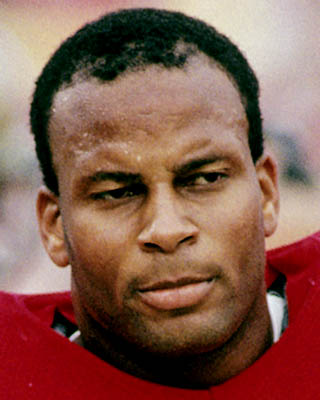
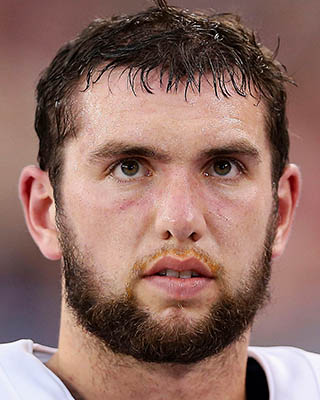
Did you know only one defensive back has been picked No. 1 overall in the NFL draft? And it wasn’t Lott, whom I graded as a 9.9 prospect in 1981, the first year I made my annual “Blue Book” available to the public. (My scale went to 10, but I never gave out a perfect score.) It was Gary Glick, a safety out of Colorado A&M who went to the Steelers in 1956. I say this because Lott actually went eighth in his class, though two of the defenders above him made the Hall of Fame (Lawrence Taylor and Kenny Easley, my second-ranked defensive back in 1981).
It’s funny to say now, but teams just didn’t value cornerbacks as much as they do now, simply because the NFL back then was built around running the ball and stopping the run. Lott could do it all, though. He was an outstanding cornerback at USC, picking off eight passes as a senior. I thought he’d make the move to safety (he eventually did in 1985), writing in my scouting report that he “has everything it takes to be the best pure safety” in the league. Still, teams knew they would get a star in Lott, and there was hype around his potential as a rookie. For me, he was the clear top prospect on the board, no matter where he ended up. Another line from my scouting report: “An outstanding player who doesn’t seem to have a weakness.” Lott had 61 picks over a stellar 14-year career for the 49ers, Raiders and Jets.
The college hype around Luck, the youngest player on my list and one of two quarterbacks, was so enormous that he likely would have been the No. 1 pick in the 2011 draft (over
Get your favorite live sports, stories and originals with ESPN+, Disney+ and Hulu. Upgrade to a Disney Bundle plan and start streaming something for everyone today!
Super Mario backed up that swagger with a record-setting career with Laval in the QMJHL, scoring 133 goals in 70 games in 1983-84. “Le Magnifique” was one of the first NHL prospects to inspire outright tanking in the NHL, with the Pittsburgh Penguins trading their best defenseman and demoting their best goalie to secure the first overall pick. They’d have no regrets, as Lemieux had a Hall of Fame career, two Stanley Cup wins and would go on to own the franchise.
Bedard sat atop a draft class that was considered one of the deepest in recent memory. He earned his franchise player hype thanks to an incredible shot release that earned him 122 goals in 119 games in the WHL, and he dominated the world junior championships like few Canadian prospects had.
Fans willfully got behind “Fail Hard For Bedard” movements for several NHL teams that defied the existence of the draft lottery by positioning themselves for high picks in a loaded draft and a ticket that could win them the next great franchise center, which the Chicago Blackhawks ended up cashing.
The winner: Lemieux. Bedard wasn’t even the best Connor drafted in the past 10 years. Mario was a template-setting generational talent who did things that no one had seen a 6-foot-4 center do before.
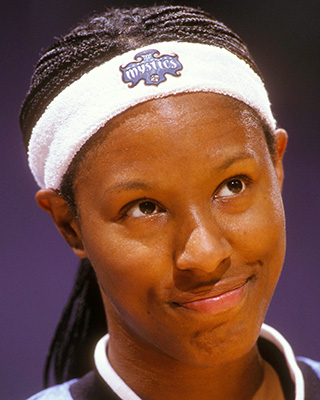
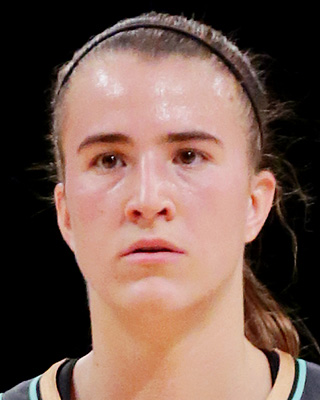
“Hyped” means something a bit different in the WNBA, which launched in 1997 and is still growing in its 27th season. The league and its players are still building name recognition. There has been more opportunity for hype in women’s basketball since the advent of social media, which is why just two players in our bracket — Holdsclaw and Diana Taurasi — were drafted in the pre-social media days.
South Carolina‘s A’ja Wilson just missed the list not because of any lack of superstar status — she might win her third WNBA MVP this season — but more due to draft circumstance. Wilson was a surefire pick at No. 1 in 2018 by the Aces, who then were an unknown entity after relocating from San Antonio.
By contrast, Ionescu made the list because of her triple-double prowess — she had an NCAA-record 26 (for men and women) playing for Oregon — and the fact she was going No. 1 to the New York Liberty and the largest media market. Ionescu led the Ducks to the 2019 Final Four, and they were on track to go back in 2020 before the pandemic canceled the NCAA tournament and prematurely ended Ionescu’s college career.
After the Washington Mystics‘ 3-27 debut season in 1998, the franchise’s eyes turned to Holdsclaw. That spring, the 6-foot-2 forward led Tennessee to an undefeated season and their third consecutive NCAA title.
Tennessee missed on a four-peat, upset by Duke in the 1999 Elite Eight, but Holdsclaw finished her Lady Vols career with 3,025 points and 1,295 rebounds, both program records. Even though the 1999 WNBA draft included a large number of veteran pro players who were available because of the demise of the short-lived ABL, Holdsclaw was still the consensus choice at No. 1.
The winner: Ionescu. It came down to the difference in eras. Holdsclaw is one of women’s college basketball’s all-time greats, and she got a lot of attention for the late 1990s. But the spotlight on the sport was bigger two decades later for Ionescu, who also was in the public eye for her friendship with Kobe Bryant and his daughter, Gigi.
Holdsclaw played 11 WNBA seasons, averaging 16.9 points and 7.6 rebounds and being named all-WNBA second team three times and a six-time All-Star. She turned 33 before the end of her final season, which was 2010 in San Antonio.
Ionescu, who has averaged 15.2 PPG, 6.2 RPG and 5.9 APG in her WNBA career, has her detractors who say she gets too much attention. Some complained about her being on the cover of NBA 2K24. Her 3-point contest domination last Saturday was one of the highlights of the recent WNBA All-Star Weekend. At 25, she has a lot of time to win a WNBA title, something the Liberty have never done.

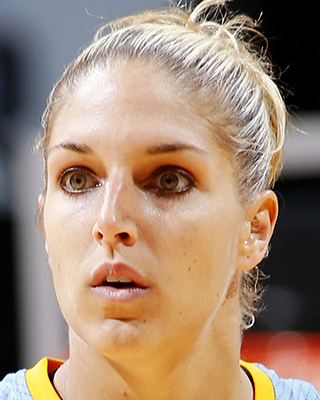
If you want hype, imagine if Delle Donne had stuck with UConn, her first college choice. She would have been a freshman in the fall of 2008, when Moore was a sophomore. Instead, Delle Donne — realizing she wanted to remain close to home for family reasons — left summer workouts at UConn, played volleyball for a season at Delaware and then competed for four seasons there in basketball.
Delaware had never before had a player the caliber of Delle Donne, and likely never will again. But it was a magical time there while it lasted. She had 3,039 points and 1,020 rebounds for the Blue Hens.
Still, the Huskies did just fine led by Moore. She and Tina Charles, the 2010 No. 1 WNBA draft pick, were the stars for UConn’s 90-game winning streak from 2008 to 2010. Moore won two NCAA titles and had two other trips to the Final Four. She finished her UConn career with 3,036 points and 1,276 rebounds.
The winner: Moore. Delle Donne being part of “Three To See” with Brittney Griner and Skylar Diggins-Smith (more on that below) and forging such a different path by opting for Delaware over UConn, had a lot of hype as she joined another No. 2 draft pick, Sylvia Fowles, with the Chicago Sky.
Delle Donne has two WNBA MVP awards to Moore’s one, although she has battled injury issues much more so than the metronomic and reliable Moore. Traded to the Washington Mystics in 2017, Delle Donne won a WNBA championship with them in 2019.
But the draft hype for Moore came both from her high-profile career at UConn and the fact the Minnesota Lynx had assembled a championship-caliber group that was waiting for a dynamic wing player to complete the ensemble. When the Lynx got the 2011 No. 1 pick, they couldn’t have found a better fit than Moore, and vice versa.
In her eight WNBA seasons, Moore led the Lynx to the WNBA Finals six times and won four championships. She stepped away after the 2018 season to focus on social justice work that including helping free from prison the man who would become her husband. Moore made her retirement official earlier this year.

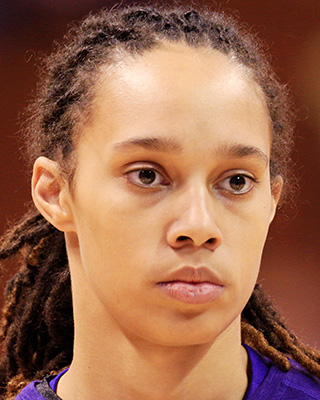
Parker was the rock of the last national championship team for Tennessee, with her back-to-back titles in 2007 and 2008 propelling her into immediate WNBA stardom. She was the No. 1 selection by the Los Angeles Sparks in 2008, the perfect match of big-talent player to big-city market. She won MVP and Rookie of the Year in 2008 — the only player to take both those awards in the same season — as a 6-foot-4 forward/center who could run the point. Parker was a prominent example of a more positionless style of basketball, and she became an inspiration for countless others since who’ve tried to model their game after hers.
The one thing Parker struggled with was winning a WNBA championship, but she got it in 2016. Then in 2021, she signed as a free agent with her hometown Chicago Sky, and won her second WNBA title. This season, at age 37, she’s trying to help the Las Vegas Aces repeat as champions.
Griner was part of the most hyped draft class in WNBA history. The ESPN marketing campaign for the 2012-13 season focused on these senior standouts: Baylor‘s Griner, Delaware’s Elena Delle Donne and Notre Dame‘s Skylar Diggins-Smith. They were dubbed “Three To See.”
Griner won a national championship in her college career, Diggins-Smith played in three Final Fours and Delle Donne put the mid-major Blue Hens on the map.
A true center who could dunk easily (and still does), Griner led the way in Baylor’s 40-0 national championship season in 2012. She finished with 3,283 points, 1,305 rebounds and an NCAA-record 748 blocked shots.
Part of the hype around Griner wasn’t just that she was a franchise-changing player. The 2012 Mercury went 7-27, and some WNBA followers thought that once their season started to go sour, they intentionally tanked in hopes of landing Griner. The Mercury denied it, but there was even more grumbling when they won the draft lottery.
Griner became a perennial MVP candidate, and has twice won Defensive Player of the Year. The Mercury’s last championship came in her second season in the league, 2014.
The winner: Parker. “Three To See” brought a lot of attention to the 2013 draft, but the hype edge still goes to Parker. Her college career coincided with the early years of the explosion of social media. She was the college game’s biggest star in 2007 and 2008 and played in the last UConn-Tennessee game in which Pat Summitt was still the Lady Vols’ coach. No one knew in 2008 that Summitt was actually so close to the end of her career because of early-onset dementia, Alzheimer’s type. As it turned out, Parker was the last Lady Vol legend to play for Summitt.
The 2008 draft was also during a brief period when the event was held the day after the national championship game in the same city as the Final Four. The hype of the NCAA title carried over immediately to Parker being picked No. 1.
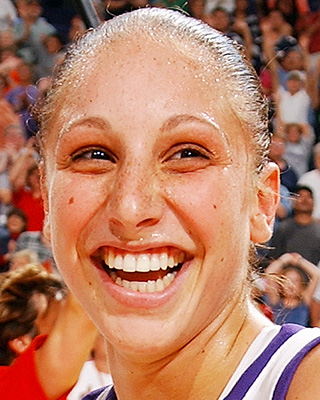
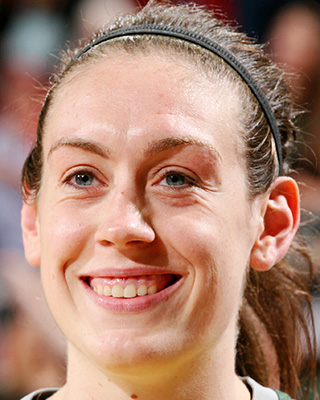
It’s a battle between two UConn legends who came along at different stages of the program, were No. 1 WNBA draft picks and have each won the league’s MVP honor once.
Taurasi won three consecutive NCAA titles for the Huskies. After playing on extremely talented teams her first two seasons, she carried a heavy load in the last two. It prompted UConn coach Geno Auriemma’s famous quip, “We got Diana, and you don’t,” and the cheeky confidence encapsulated the hype surrounding Taurasi as she headed to the WNBA. She has lived up to it.
In 2004, she was selected by the Phoenix Mercury, a franchise that had some early success, advancing to the 1998 WNBA Finals, but between 2001-2006 didn’t make the playoffs. That changed dramatically in 2007, when Phoenix won the first of three WNBA titles. Since, Phoenix has missed the postseason just twice. And Taurasi has been there for all the success.
A five-time Olympian, Taurasi is the WNBA’s all-time leading scorer and is closing in on the 10,000-point mark. At age 41, she continues to start for the Mercury and is under contract through 2024.
Stewart, 28, went one better than Taurasi at UConn: She won four NCAA titles and then was hyped as the key piece to the Seattle Storm renaissance, joining 2015 No. 1 pick Jewell Loyd and veteran Sue Bird in Seattle. It worked exactly as hoped.
The Storm won the 2018 and 2020 league titles with Stewart earning WNBA Finals MVP both times. To date, Stewart has averaged 20.6 points and 8.7 rebounds; a torn Achilles tendon, an injury suffered while playing overseas which sidelining her for the 2019 WNBA season, is the only thing that has slowed her down.
The winner: Taurasi. Her college career was before social media, but she was the focus of a great deal of traditional media. She was part of what’s considered by many as the greatest women’s college team — the 2002 national champions — and then, as mentioned, was the propellant to two more titles. Taurasi also played during the height of the UConn-Tennessee rivalry, which was the biggest story in the women’s game. During her Huskies career, UConn beat Tennessee three times at the Final Four, two of those for the national championship.
The UConn-Tennessee series ended after the 2007 season and didn’t resume until 2020, so Stewart never faced the Lady Vols. Stewart had the rivalry with Notre Dame, and her four NCAA titles made her and fellow 2016 seniors Moriah Jefferson and Morgan Tuck the biggest winners in UConn history. They went 1-2-3 in the 2016 WNBA draft.
Ultimately, Taurasi’s bolder, flashier, love-her-or-hate her personality on court — no UConn player seems more like Auriemma than Taurasi — and being part of the UConn-Tennessee saga give her the hype edge.



The winner: Taurasi. Both guards are native Californians, born 15 years apart, who went elsewhere for college. Taurasi traveled cross-country to join the UConn dynasty, while Ionescu took Oregon to unprecedented heights with the 2019 Final Four. As much as Ionescu’s triple-double success garnered headlines, Taurasi’s four trips to the Final Four and three championships made her an all-time college great who was drafted by Phoenix as a can’t-miss superstar.


The winner: Parker. Both won two NCAA titles and joined pro teams ready to win titles with them. That happened right away for Moore, while it took many years for Parker. For prospect hype, the edge goes to Parker. Her 2008 was epic: NCAA champion, Final Four Most Outstanding Player, No. 1 draft pick, dunked in a WNBA game, Olympic gold medalist, WNBA MVP, WNBA Rookie of the Year. She also found out later that year she was going to have a child; her daughter Lailaa was born in 2009.



The winner: Parker. It’s hard to pick one over the other because both came into the WNBA with the same kind of surefire, future-Hall-of-Famer hype, which turned out to be accurate. And they came from the two most prominent programs in the women’s college game at the time. Taurasi won three NCAA titles to Parker’s two. Taurasi played four years in college to Parker’s three, as Parker redshirted what would have been her first season with a knee injury. Still, Parker could dunk, handle the ball as a post and had the type of game to be a transformational player. The anticipation of Parker joining the WNBA was palpable, especially at a time when the league needed a new infusion of stars.